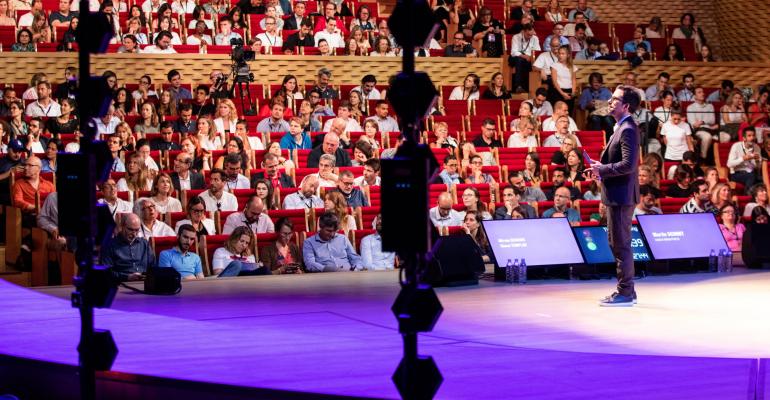In 2018, Michel Lévy Provençal, a cofounder of BOMA France, an innovation network that runs industry summits and other events, decided to experiment with biometric audience tracking. What could he learn from the facial expressions of his attendees?
Working with biometrics company Datakalab, BOMA mounted video cameras at the side of the stage to film the facial expressions of the audience. The video feed ran through the Datakalab software to evaluate whether people in the audience were focused on the stage and what emotion they were expressing. (Read more.) When the results were in, Lévy Provençal had his answer: A technical explanation in the speech should be shortened to avoid losing the audience.
That experience has led him to explore the possibility of using audience-engagement monitoring to hone other presentations. Even if a talk is short, every second counts to deliver a message.
Provençal describes how the testing works. “We make a correlation between attention peaks and the different moments in the talk where we need them. Each talk usually has the same structure. In the first 30 seconds, we have to catch the attention of the audience and need an attention peak right then. Several minutes inside the talk we know when we should have another peak of attention. And the last 30 seconds are really, really, important because it is the moment the message is delivered.”
By watching the livestream of raw data and marking on a script where the peaks are and where they should be, Provençal can monitor how the message is being received during rehearsals and adjust the script accordingly. Provençal also sees many future uses for the technology in education. One educational project he is involved with in France are massive open online courses, or MOOCs, where the technology could be used to determine where lessons are failing to hold students’ attention.





